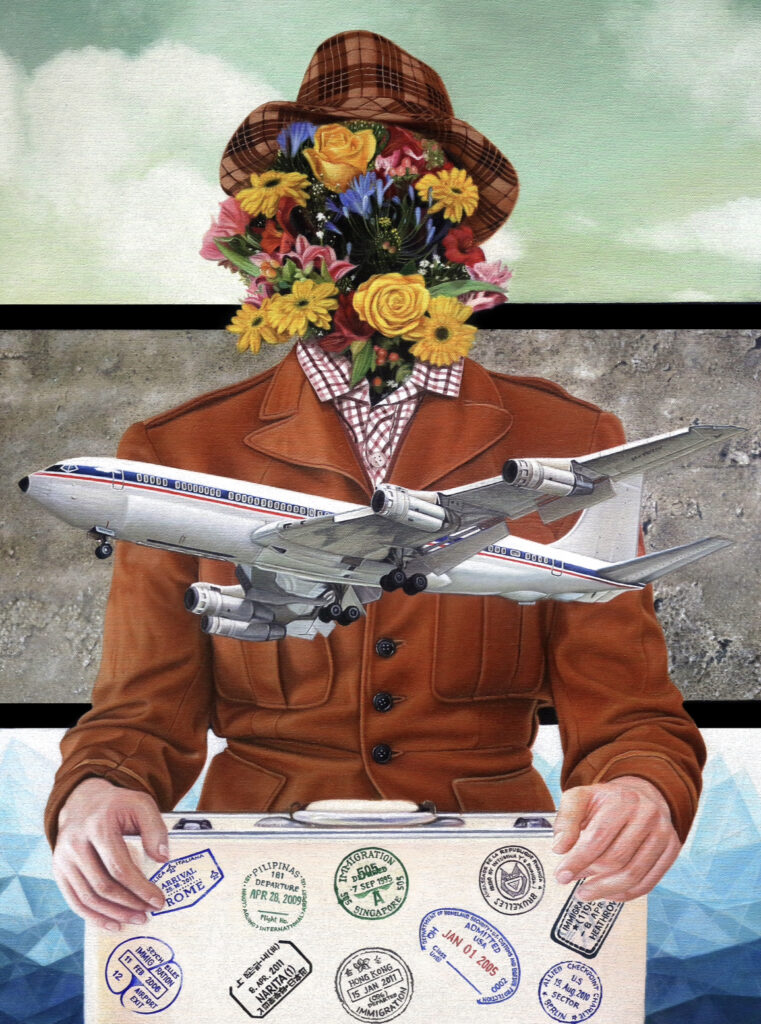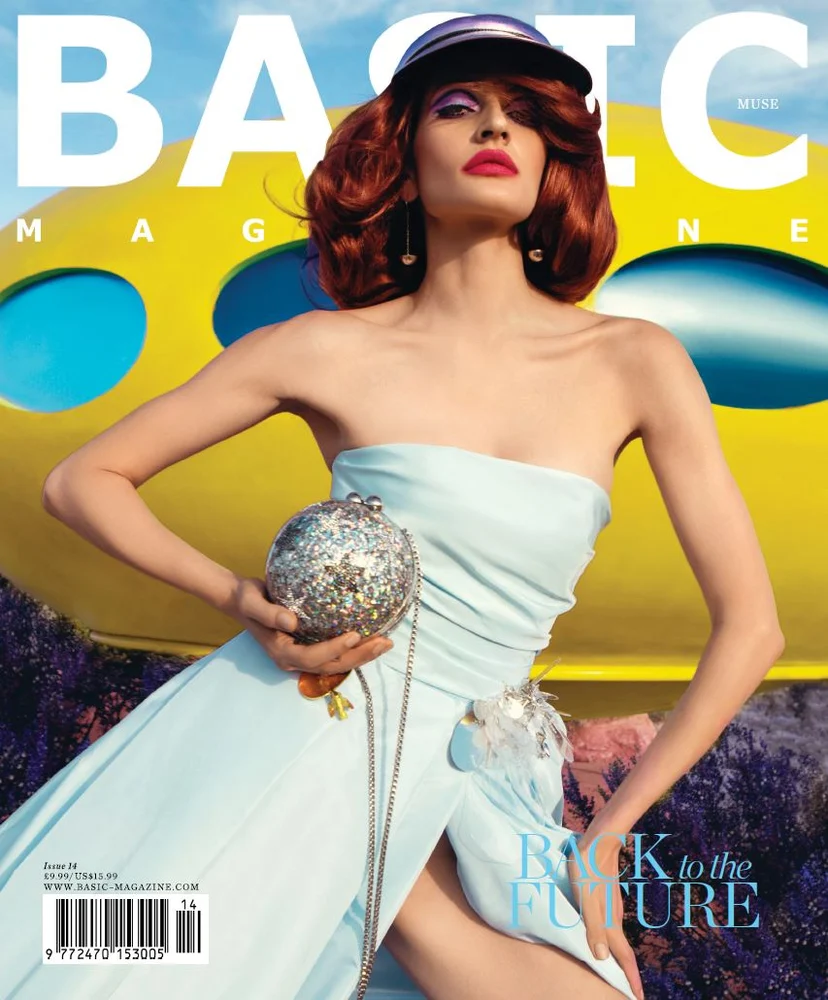
What is the concept and ideology behind your art? Talk to us about your artist statement.
When I conceive and compose my art, I become a child again, looking at the world from the perspective of a child teeming with wonder, magic, and mystery to explore and unravel. I create a timeless world where there is no distinction between the past and present, the physical and metaphysical. There are no prejudices nor hostility, no suffering, but rather playfulness, adventure, harmony, and reconciliation. And this, I should say, is the most important driving force of my creative process: conjuring up the inner child in me with unbridled passion and freedom to transform, evolve, and transcend from the punitive realities of our convoluted existence.
The influences of my art are René Magritte, Paul Delvaux, Gustav Klimt, Frida Kahlo, Salvador Dalí, Jean-Michel Basquiat, and William-Adolphe Bouguereau. While their works generally explore the unconscious and imagination using dreams, myths, and taboos in a dreamlike portrayal of symbolic elements, my work trudges towards the imaginary landscape of fairy tales, the parallel world of wonder and mystery, and the intimate bonds between humans and animals— all allusive to my childhood dreams and fantasies. I derive most of my artistic concepts from personal experiences and stories of the people who are close to me. I cannot create something that has no significant meaning or connection to my life. And like a weaver of dreams, I collect fragments of realities, memories, and experiences, and weave them together like a beautiful dream that conjures at night or as a child would tell a story from an imaginary world of adventure and fantasy. Although I depict them in a whimsical and surreal setting with effusive forms and colors, there are reflections of some painful memories, unfulfilled dreams, and longings, but always hopeful and expectant for a harmonious world. In the early stage of my creative process, I conceived my art like a mother conceiving a child, except that mine spawned from imagination. As soon as my concept ripens, I begin my rough sketches on paper from the main subject to its subsidiary elements. The second stage is choosing the model, costumes, and setting, depending on the theme of my painting. Rather than renting the vintage props, I create and buy my own, which are handy for future use. After staging the model and the elements of my composition, I take photos and use them as final studies and references for laying out sketches and rendering oil colors on canvas. I use water-soluble oil paint on my canvas because it has the depth, texture, and brilliance of color. It is fast-drying, easy to clean, and more convenient to mix than the traditional one. It is also environment-friendly with negligible fumes and toxins. I would pre-mix the oil colors and put them in a sealed container, which saves time, and only then, I could start painting. I usually paint the subject first because it demands intricate detail, then the elements, and finally, the background as the last stage of my creative process.
When I paint, I can work for months without seeing people or socializing with friends. It is a price to pay for a creative journey that nurtures my being and self-actualization as an artist. I could modestly say that this is how I nourish and find value and meaning in my creative life, fashioning a sublime world of wonder, innocence, and harmony in a dreamlike mode and representation. It’s not to escape from the unbearable inundation of reality, but rather to make it bearable from the perspective of a child. This is the primary reason why I create and how, in turn, my art created me. I have become a better person.
What is your most vivid childhood memory?
One of my most vivid childhood memories is when my mother and I would spend time together in the living room while she taught me how to read using illustrated books. My mother was suffering from cancer at that time, but it didn’t stop her from educating me. Looking at all those drawings, I personally think that was my earliest exposure to art.
Which book or novel would best visualize your art?
When it comes to the novel, it would be 1Q84 by the legendary Haruki Murakami. Everything there is surreal.
Tell us about your most vivid dream.
One of my most unforgettable and most vivid dreams was the day that I finally got to see my one and only daughter. We spoke no words and just hugged quietly.

